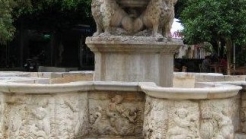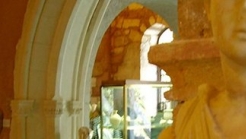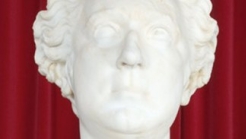

Greece
The Venetian Heraklion deserves to be walked and you have to enjoy the beauty that keeps it well hidden in the arms, which are open to all visitors. You have got off the ship already or plane and you found the Venetian harbor, the promenade of the city in order to gain a first impression of the city
You have got off the ship already or plane and you found the Venetian harbor, the promenade of the city, in order to gain a first impression of the city. There you will see in front of you Koules, as the fortress is known to locals, or in Italian with the name «Rocca a Mare». The fort was built in the mid 16th century and had the task of supervision and protection of the harbor. Also, in its basements were located the most inhumane prisons. If you decide to go there to admire, you can get a photo beneath the winged lion of St. Mark, which dominates the main gate of the fort.
Just to the east of the 18 Englishmen Plaza are the dockyards where in there the Venetians placed the galleys to be repaired or to build new ones. Further, even if you walk a hundred meters to the east, you will see a large warehouse of salt and water that was there.
Taking direction west of the square and within walking distance, you will find yourself in front of one of the greatest Roman temples of the city which is dedicated to Peter and Paul, and belonged to the Order of Dominican monks. Now is restored and accessible to visitors.
But let us return to our way to the city center. But to move into the city, you have to walk the road August 25 starting from 18Englishmen Square that goes to the city center and to the Fountain of Lions. The "Rouga Maistra," as it was called by the Venetians, was one of the most important streets of the Venetian Heraklion.
Walking on, then, you will confront each other the following sites or what survives: the church of St. Titus, the Loggia (the club of aristocrats), residues from the Ducal Palace and that of the Captain, as the Basilica of San Marco.
The church of St. Titus was built in the medieval era by the Byzantines, but the Venetians turned it into a Roman temple and seat of the Catholic archbishop of Crete.
Above on the left is the Loggia, which was the building where the Venetian nobles gathered and discussed the various state issues or got entertained.
Next to the Loggia survive even remnants of the palace of the Captain, the first admiral of the Venetian fleet of the Kingdom of Crete.
Opposite stands the Palace of the Duke, of which today there is almost nothing. In this area housed small shops and cafes catering.
Next to this you will admire the Fountain of Lions, which was constructed in 1628 by the General Intendant of Crete, Francesco Morosini to solve the problem of water shortage in the city.
And because the surprises are those that make the trip more pleasant ride, we left last the giant Venetian walls that encircle the city. It is the largest fortification in the Mediterranean, which was being built for almost two centuries. From wherever you get on, you will meet ramparts, escutcheons of Venetian noblemen, huge inlet and outlet tunnels for military purposes, squares and, of course, everywhere dominates the winged lion of Saint Mark as a hallmark of Venice.
The walls are accessible in almost all their land from where you can enjoy the view of the city from above. In recent years many gates or tunnels have been restored and serve as exhibition spaces or venues.
The Venetian Heraklion deserves to be walked and you have to enjoy the beauty that keeps it well hidden in the arms, which are open to all visitors.


Heraklion is not just a city in the next visitor’s destination. Expresses something more, something deeper, a history of thousands of years. With this thought must learn the traveler to "read" the area beyond the mundane habits that require a visit to museums or at Knossos.


The museum is housed in the same building as the old Venetianturkey Headquarters Complex, which was within the perimeter of the Venetian castle, which was strengthened during the Turkish occupation.


The house he lived in, where he wrote and died, after being destroyed by the WWII bombardments, was later restructured and still exists to this day. In Solomos’s house, the Company of Corfu Studies founded the Centre for Solomos Studies, which operates as “Solomos Museum”.
1039 Ε 6061 01515 00